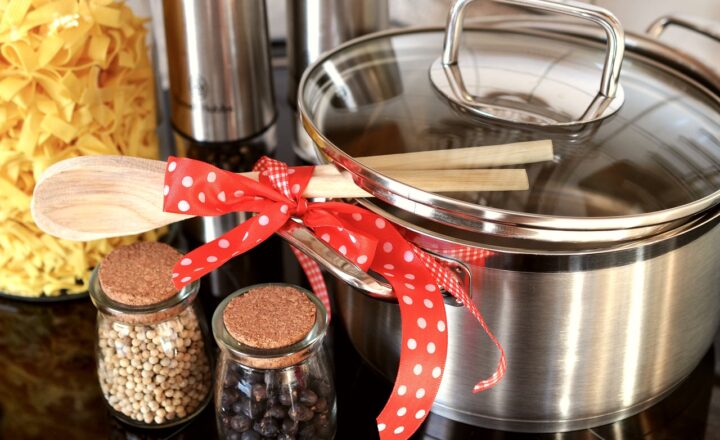
Living in a tiny dorm room doesn’t mean you have to sacrifice your health or culinary aspirations. On the contrary, with a bit of creativity and some smart planning, you can cook delicious, nutritious meals without a full-size kitchen. In this article, we’ll explore essential tips, equipment, and healthy recipes that will help you navigate the kitchen challenges of college life while maintaining a balanced diet.
1. The Importance of Healthy Eating in School
Eating healthy in college is crucial for managing stress, maintaining energy levels, and staying focused on your studies. A balanced diet can improve your mood, boost your immune system, and keep you at your best. Dorm life often leads to unhealthy eating habits due to the limited cooking facilities and the allure of fast food or microwave meals. However, cooking healthy meals can positively impact your mental and physical well-being, helping you make the most out of your college experience.
2. Essential Tools for Cooking in a Dorm Room
Before diving into the recipes, let’s discuss some of the essential kitchen equipment you’ll need to whip up healthy meals in a small space. Here’s a list of must-have items for a tiny dorm kitchen:
- Microwave: A multifunctional microwave can be used for reheating meals, steaming veggies, and even baking certain recipes. Look for a unit with various settings to maximize your cooking options.
- Mini Fridge: Keep fresh ingredients, fruits, and leftovers cool and accessible. A compact fridge is crucial for meal prep and storage.
- Electric Kettle: This handy device can help you prepare everything from tea and instant oatmeal to boiled eggs and steamed vegetables in minutes.
- Rice Cooker: In addition to cooking rice, this versatile tool can also steam vegetables or even make oatmeal and soups with ease.
- Bowls and Utensils: Invest in a set of microwave-safe bowls and utensils. Opt for stackable items to save space and make cleaning easier.
- Cutting Board and Knife: These are essential for meal prep. Select a small, portable cutting board and a versatile chef’s knife to handle most of your chopping needs.
A few additional items like measuring cups, a can opener, and a spatula can also enhance your cooking experience.
3. Smart Grocery Shopping & Meal Prep
Planning your meals before heading to the grocery store can save you time and money. Here’s how to shop smartly:
- Stick to Whole Foods: Focus on fresh produce, whole grains, low-fat dairy, and lean proteins. These items are nutrient-dense and essential for maintaining your health while studying hard.
- Purchase Convenient Snacks: Items like nuts, yogurt, and whole grain crackers make for healthy snacks during study sessions, keeping you energized and focused.
- Batch Cooking: Prepare a large batch of meals during the weekend when you have more time. Store individual portions in your fridge or freezer for quick and easy access throughout the week.
Meal prepping fosters self-discipline and helps combat the urge to indulge in unhealthy fast food options when time is tight.
4. Breakfast Ideas for Busy Mornings
Breakfast is often cited as the most important meal of the day. Here are some healthy, no-fuss breakfast ideas you can prepare with limited equipment:
- Overnight Oats: Combine rolled oats, milk (or a dairy alternative), yogurt, chia seeds, and your choice of fruits in a jar and let it sit overnight. Grab and go in the morning for a quick meal packed with fiber and protein.
- Mug Scramble: In a microwave-safe mug, beat two eggs with some veggies and cheese. Microwave for 1-2 minutes for a fluffy, protein-rich breakfast.
- Greek Yogurt Parfait: Layer Greek yogurt with granola and fruits for a delicious and nutritious start to your day. This will keep you satisfied and energized for hours.
These quick options give you the energy to tackle your classes while avoiding unhealthy breakfast items.
5. Easy Lunch & Dinner Recipes
Now let’s look at some easy-to-follow and healthy recipes that you can make in your dorm room:
- Quinoa Salad: Cook quinoa in a rice cooker or microwave. Toss it with diced cucumbers, cherry tomatoes, bell peppers, parsley, and a simple olive oil-lemon dressing. This dish is nutrient-packed and perfect for a filling lunch or dinner meal prep.
- Vegetable Stir-fry: In a microwave-safe bowl, combine mixed frozen vegetables with cooked chicken or tofu. Add low-sodium soy sauce and microwave for a few minutes. Serve it over instant brown rice for a quick, delicious dinner.
- Soup in a Mug: Buy pre-packaged soup mixes or make your own by combining vegetable broth with your choice of ingredients like canned beans, frozen veggies, and seasonings. Heat in the microwave, and enjoy a warm comforting bowl of soup in minutes!
These meals are simple, nutritious, and can be prepared quickly to fit your busy student schedule.
6. Healthy Snacks for Sustaining Energy
In addition to meals, having healthy snacks on hand provides energy during those long study sessions. Here are some easy-to-prepare snacks:
- Nut Butter & Apple Slices: Slice up an apple and spread almond or peanut butter on the slices for healthy fats and protein.
- Homemade Trail Mix: Combine nuts, seeds, dried fruits, and a bit of dark chocolate for a quick energy boost. Store in an airtight container for easy access.
- Veggies & Hummus: Pre-cut veggies like carrots or bell peppers and pair them with store-bought or homemade hummus for a crunchy, nutritious snack.
Snacking healthily keeps your energy levels consistent and helps you avoid those unhealthy vending machine temptations.
7. Tips for Staying Creative in the Kitchen
Lastly, let’s discuss how to keep things interesting in your tiny dorm kitchen:
- Experiment with Herbs & Spices: Spruce up your meals by adding different herbs and spices to create depth and flavor. A little can go a long way in making healthy meals taste great.
- Explore New Recipes Online: Utilize cooking blogs, YouTube, and social media platforms for inspiration. You’ll be surprised at the variety of recipes you can modify to fit your limited resources.
- Join Foodie Groups: Connect with fellow students who enjoy cooking. Exchange recipes and tips, or even host a cooking night together where you can learn new skills and share meals.
Keeping your meals diverse will not only make cooking enjoyable but also maintain your enthusiasm for eating well.
Conclusion
Cooking healthy meals in a tiny dorm room may seem challenging, but it is entirely possible with the right mindset, planning, and tools. By investing in essential kitchen equipment and adapting your meal prep and grocery shopping, you can ensure you nourish your body during your time in college. The satisfaction derived from cooking while balancing your academic demands is not only fulfilling but creates a healthier you. Start experimenting with recipes today, and embrace the culinary adventure that awaits you in your dorm room!







